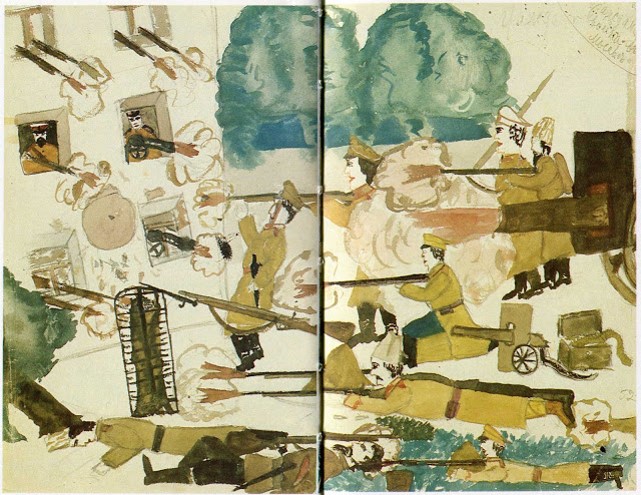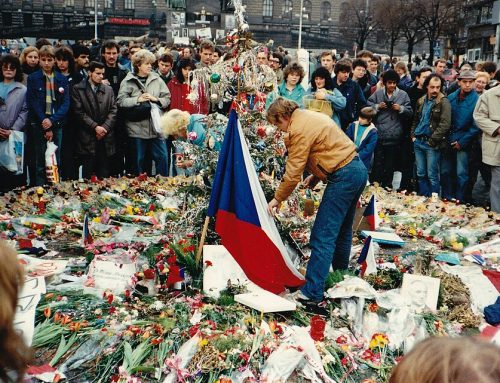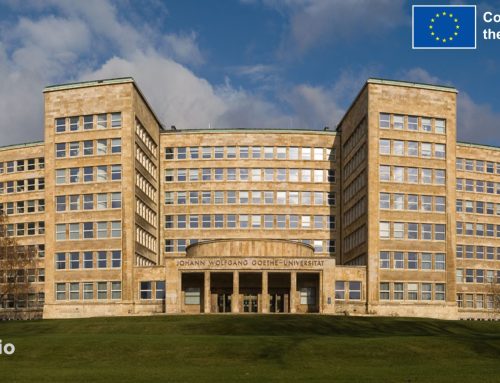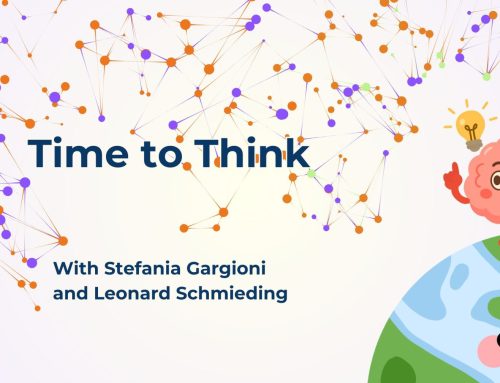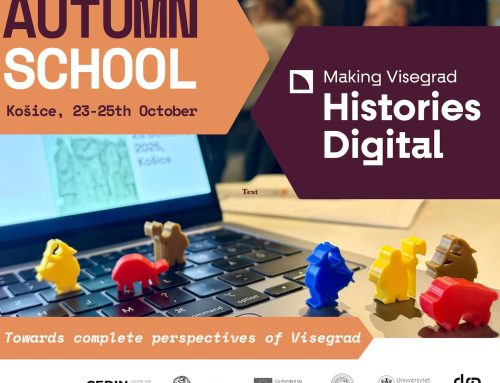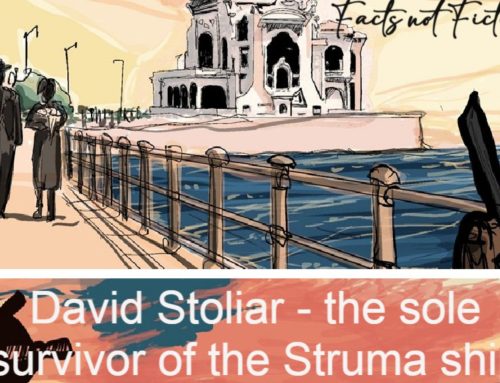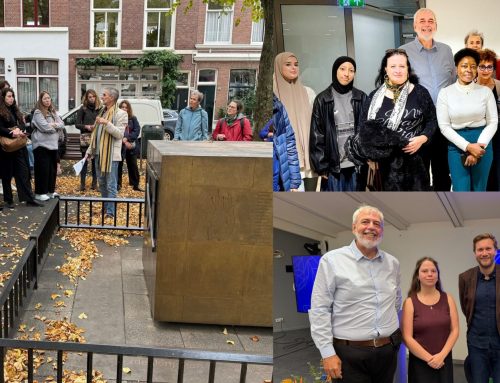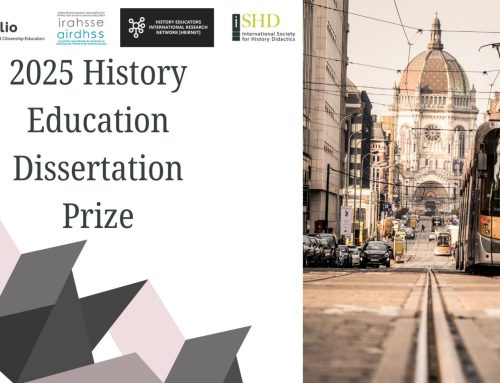Picture: Demonstration near the Bolshoi Theatre
Historiana, the educational portal developed by EuroClio, is entering a new engaging phase of development. Since the website’s establishment it has built up a broad variety of learning activities and historical content available to teachers, historians, as well as students providing quality education on history and heritage from a global perspective. Now, to make the content generation more inclusive the idea of a crowdsourcing came up. Crowdsourcing is a process in which many contributions by individuals cumulate to a valuable result. In the case of Historiana, EuroClio, led by the Historiana historical content team, involved its community to gather historical sources from a wide range of countries and draw from the diverse language skills and local historical knowledge of its members. The idea is that together we can produce source collections that are truly transnational and multiperspective, thereby removing an important barrier for those who want to teach history in this way.
Because things are sometimes easier said than done, we wanted to test the viability of crowdsourcing for this goal, with the pilot ‘Developing a transnational source collection on the Russian Revolution’. The purpose of the pilot was to set the events in revolutionary Russia into a wider international context and explore the different ways in which people, in the political elites or workers’ movements as well as amongst the general public or the bourgeoisie, responded to what was happening in Russia. In order to provide a transnational perspective, we wanted to include sources from within Russia as well as from the states neighbouring Russia, the Allied as well as the Central Powers. The focus was put on six key events in the years from 1917 to 1923.
EuroClio invited members to participating in a webinar session that took place on two afternoons in October and November 2018. During these sessions, the participants were instructed about the ideas behind Historiana, the aims of the source collection as well as the practical requirements and formalities for submitting sources. There were no requirements made on how many sources a participant would be expected to provide nor on the format of the sources.
By the end of the year, around fifty sources from more than twenty participants reflecting a broad variety of perspectives were submitted. Subsequently, the EuroClio Secretariat and the content team of Historiana took on the task of categorising and analysing the sources received. In certain cases, more information was collected from contributors or further research was carried out. Preliminary findings and conclusions were then presented by Bob Stradling at the EuroClio Annual Conference in Gdansk at the beginning of April in 2019. The positive reception by the audience as well as the motivated participation by the contributors supported the successful start of the pilot project.
Currently, the source collection counts over 150 sources from more than 13 countries. One of the biggest advantages that followed from the dedicated contribution of many members was the wide variety of different types of sources that came together. The diversity ranges from newspaper articles and eyewitness accounts, diplomatic correspondence and government documents to visual sources such as cartoons, photographs, drawings and documentaries. These sources provide a basis for teaching material that is reflecting multi-perspectivity as well as engaging and stimulating critical thinking and analytical skills.
For example, it is rather unusual to find out what children, being eyewitnesses to major world events in the past, were thinking about these at the time. Thanks to the contribution of Bistra Stoimenova, we have received a collection of children’s drawings made in Moscow in the year 1917. One of these drawings, depicting the first days of the bourgeois-democratic revolution, is shown below.
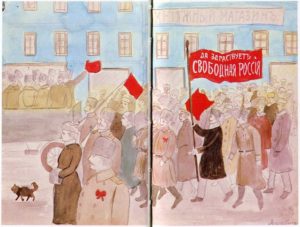
Figure 1 The bourgeoise-democratic Revolution in Moscow 1917. Source Contributed by Bistra Stoimenova. (accessed from Интернет-журнал «Подмосковный краевед», 2017, https://trojza.blogspot.com/2017/01/1917_17.html)
In addition, we have received several sources that throw a surprising and less official perspective on the dynamics of the revolution. Examples are the photographs of Latvian workers at the Mantel Machine Factory who fought for the Latvian independence in Russia or a political poster directed at Allied soldiers in the Ukraine during the Civil War, shared by Dzintra Liepina.
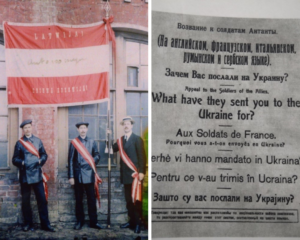 Figure 2 Left: A photograph of Latvian Workers. Contributed by Dzintra Liepina. Right: A poster appealling to allied soldiers. Contributed by Lazar Aranitovic
Figure 2 Left: A photograph of Latvian Workers. Contributed by Dzintra Liepina. Right: A poster appealling to allied soldiers. Contributed by Lazar Aranitovic
The involvement of the EuroClio members made it possible for us to access and combine sources from countries and language areas that were not previously represented. While sources from the Russian Empire, the Central as well as the Allied Powers form the majority, a large proportion of the sources come from countries that were occupied by the Central Powers, like Albania or Luxembourg, or neutral countries, such as the Netherlands and Switzerland. This variation makes it possible to look at the events of the Russian revolution from a truly transnational perspective.
The amount of received sources will enable the team behind Historiana to create a number of small source collections, which will be uploaded to the website, providing an interesting, diverse and multi-perspective addition to existing history textbooks. Although a selection of the submitted sources must be made for this process, it must be emphasized that all submitted sources make a valuable contribution to this project as they enhance the understanding and knowledge of the events and thus make a comprehensive contextualization possible.
The source collection on the Russian Revolution was made possible by the diverse contributions and dedicated cooperation of the EuroClio members.
This pilot project has been an exciting and successful process for us as well as for the members of the EuroClio community, who have been given the opportunity to exchange ideas, to contribute to new teaching materials and to intensify and share their research.
If you, as a reader, feel inspired by the topic and would like to participate, then we look forward to hearing from you. Despite the success of the project there are still some gaps in the source collection. Less represented are contributions representing the perspectives within Russia as well as the perspectives from the bourgeoisie across Europe. Furthermore, only a small number of sources reflect the uprising of workers and soldiers in Petrograd in July 1917, the attempted military coup led by General Kornilov or the signing of the Treaty of Brest Litovsk on 3 March 1918. If you would like to contribute a suitable source to these gaps, you are welcome to contact Alice Modena (alice@euroclio.eu).
[su_note note_color=”#ffffff”]After the successful implementation of the first pilot project, EuroClio is preparing for the next crowdsourcing project. In September 2019, the next
Webinar on the Fall of the Berlin War
will take place.
To commemorate the 30th anniversary of this historic event, we will discuss the history behind “the Fall of the Berlin Wall,” the coming to life of the Wall and its end. The reunification of Germany had not only far-reaching consequences in Europe, but was also a catalyst for developments in Eastern Europe and the Soviet Union. The webinar is the prelude to a new crowdsourcing project. The aim is to create a transnational and multi-perspective source collection that will provide history teachers and students with a multifaceted insight to the end of the Cold War. For once, the perspectives and activities of ordinary people are to stand in the spotlight and, on the basis of diverse sources, it shall be shown how contemporaries have experienced these historical events. If you are interested in the events of 1989, and specifically the Fall of the Berlin Wall and its impact on Eastern Europe and the Soviet Union, and would like to participate in this upcoming Webinar, please look out for details about it on our website and on social media and register online.[/su_note]
[su_note note_color=”#ffffff”]We would like to thank
- Bistra Stoimenova
- Bojana Dujkovic Blagojevic
- Dzintra Liepina
- Guido Lessing
- Jim McBride
- Joy Jhugroo
- Lazar Aranitovic
- Lulzim Abdiaj
- Mariana Lagarto
- Miguel Barros
- Olfa Mahmoud
- Olga Terenetska
- Riitta Mikkola
- Tatiana Koval
- Valentin Schönherr
- Valerio Bernardi
- Vesna Lučić
- Zdravko Stojkoski
for their valuable contributions![/su_note]
Written By Louise Sträuli, Euroclio Research Trainee

